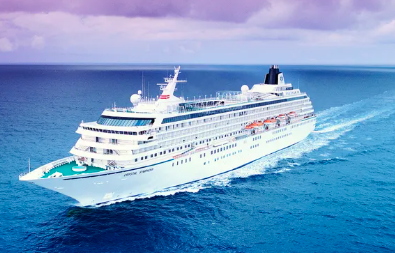The allure of traveling by ship captivates the heart and imagination, offering a unique perspective of the world. Whether you’re gliding across calm oceans or navigating the winding rivers of distant lands, the adventure of cruising combines the freedom of travel with the excitement of discovery. This form of travel brings together individuals seeking leisure and exploration, presenting an opportunity to disconnect from the mundane and engage with nature’s grand backdrop while enjoying the luxuries of modern conveniences.
Setting out on a maritime voyage offers a different mode of exploration where the journey becomes a vital component of the adventure. The deck of a ship provides an unparalleled chance to stare at infinite vistas, watch the sun dissolve into the water, and enjoy moments of quiet and introspection. The flexibility and variety provided by ship travel negate the need for the rigid plans often associated with air travel, where each day offers new landscapes, cultures, and experiences at every port of call.
Maritime voyages have been the backbone of exploration and trade for millennia, becoming instrumental in spreading cultures and linking continents. The history of seafaring vessels dates back to ancient civilizations, where early boats were used to traverse waters and discover new territories. Over time, maritime technology has evolved dramatically, marked by significant advancements such as the development of sailing ships, steamships, and today’s modern cruise liners.
Throughout history, numerous expeditions have highlighted humanity’s insatiable curiosity and desire to explore the unknown. Notable explorers such as Christopher Columbus and Ferdinand Magellan embarked on perilous expeditions that profoundly altered world maps and trade routes. These pivotal journeys established international commerce and fostered cultural exchanges that enriched societies.
Modern cruise travel is a far cry from its historical antecedents. It is characterized by luxury, comfort, and a wide array of onboard amenities. Today’s cruise ships resemble floating resorts, blending opulence with convenience. From gourmet dining experiences and world-class entertainment to comprehensive wellness centers and lavish accommodations, each element is meticulously designed to enhance passenger enjoyment.
Cruises cater to various preferences and budgets, from themed voyages to exotic expeditions. Whether seeking the serenity of a spa retreat or the thrill of onboard activities like zip-lining and surf simulators, passengers are spoiled for choice. The diversity of experiences available ensures that every traveler discovers something extraordinary during their journey, making cruising an attractive option for vacationers worldwide.
As with any travel, the environmental impact of cruising is a topic of increasing scrutiny. Concerns about emissions, waste management, and ships’ ecological footprint drive the industry towards more sustainable practices. The commitment to greener operations has seen the implementation of advanced technologies, such as propulsion systems that reduce emissions and hull designs that minimize fuel consumption.
Cruise lines are actively protecting the health of our oceans by investing in initiatives that reduce their carbon footprint and promote sustainable tourism. These include programs for waste recycling, energy efficiency, and partnerships with environmental organizations to conserve marine ecosystems.
Selecting the right cruise ship can significantly influence your travel experience, and it often requires careful consideration of personal preferences, travel goals, and budget constraints. Cruise ships come in various sizes and styles, from intimate riverboats to sprawling mega-liners. Each offers distinctive experiences—some focus on luxury and refinement, while others emphasize adventure and destination immersion.
Those seeking opulent travel may opt for large ocean liners with expansive facilities and diverse itinerary options. In contrast, travelers desiring deeper cultural engagement might choose smaller expedition vessels that access remote locales. Understanding the nuances between different types of ships and cruise offerings can enhance the likelihood of a satisfying voyage tailored to individual needs.
Preparation and participation are key to ensuring a memorable cruise. Pack wisely, considering the climate and activities planned for each port. Layered clothing and comfortable footwear are essential, as is a good book to read while lounging on deck. Embrace the array of onboard activities—from culinary classes and wellness workshops to themed parties and live performances—and take advantage of the opportunity to learn new skills and engage with fellow travelers.
Cultivating social connections on board can provide opportunities for shared experiences and lasting friendships. Whether dining together, embarking on shore excursions, or simply enjoying a quiet conversation over drinks, the social aspect of cruising adds an enriched layer to the travel experience.
One of the greatest joys of cruising is the frequent stops at various fascinating ports, each offering its allure. From the Caribbean’s sun-drenched beaches to the Norwegian fjords’ mystical landscapes, these destinations promise unique cultural, historical, and natural experiences. Ports like Santorini, Venice, and the Cayman Islands invite visitors to delve into their rich heritages and striking beauty.
Whether exploring ancient ruins, indulging in local cuisines, or experiencing vibrant festivals, each port presents an opportunity for discovery. Choosing ports that resonate with personal interests can greatly enhance the cruise experience, creating a tapestry of unforgettable moments woven throughout the voyage.
As technological advancements continue to reshape the travel industry, the future of cruising is set to be transformed by innovations that promise increased comfort, safety, and eco-consciousness. New technologies in ship design focus on enhancing passenger comfort with smart cabins, energy-efficient systems, and AI-driven personalization that tailors onboard services to individual preferences.
A promising feature of the next generation of cruises is the integration of virtual reality experiences, allowing passengers to explore destinations remotely and plan excursions more efficiently. Additionally, innovations like eco-friendly propulsion and power systems are paving the way for a more sustainable and environmentally responsible future in cruising, ensuring that this mode of travel remains as enjoyable as it is considerate of our planet.
Related Articles
Pete Hegseth Net Worth – A Complete Overview!
The Wishing Game – A Magical and Enchanting Tale!
Punk 57 – A Deep Dive into the Bestselling Novel!
